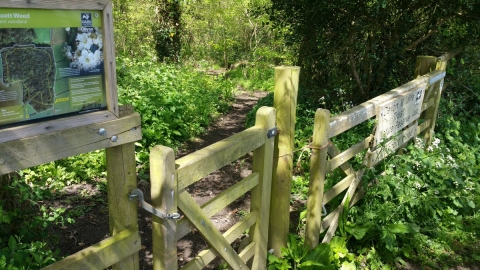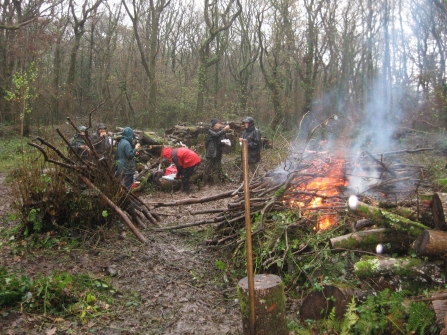
Uppacott Wood. Photo, Steve Hussey
Uppacott Wood
Know before you go
Dogs
When to visit
Opening times
Open at all timesBest time to visit
All year roundAbout the reserve
There's much to see both within and looking out from the reserve. Take a path under mature oaks, ashes and hazel coppice to discover glades of spring woodland flowers, while the level hilltop location, just a few miles south of Barnstaple, gives wide views of the surrounding countryside.
Ash dieback
The disease ash dieback is now widespread in the UK and is present at many of our nature reserves, so we carry out tree felling across our sites in winter months. For your own safety please observe temporary path diversions and closures.
Where possible we will leave affected ash trees in place to decay naturally as an important habitat for wildlife. We plan to only fell diseased ash trees which pose a threat to people or infrastructure. Before trees are felled, we will check whether any rare or protected wildlife is present. If it is, we will postpone or avoid felling these trees. No felling will take place during the bird nesting season.
DWT’s Saving Devon’s Treescapes project are working with communities, landowners and businesses to help make Devon's precious treescapes more resilient in the face of ash dieback. Find out how you can get involved here.
NOTICE: If you are visiting our reserves, please note that there have been instances of H5N1 Avian bird flu found in birds in Devon. There is very low risk to public health, but we do ask that if you come across any unusual or unexplained bird deaths on or near our reserves, please do not touch them and avoid allowing your dog to come into contact with dead birds. Please report them to Defra here or call 03459 335577 and also report your findings to DWT by email at contactus@devonwildlifetrust.org.
Habitat
Contact us
Location map

Uppacott work party. Photo, Simon Tomasso
A woodland community in action
Uppacott wood is home to a rich variety of woodland plants, birds, butterflies, lichens and fungi, many of which are indicators of ancient woodland. In spring, woodland flowers such as violets, wood sorrel, betony, sanicle, common twayblade and early purple orchid colour the edges of dappled glades and shady paths, before the leaf canopy closes overhead later in the year.
While these plants are associated with ancient woodland, the mature trees here are no more than 200 years old, giving an insight into past management history. Trees with dead branches are now retained to provide homes for hole nesting birds and the insects on which they feed, as revealed by the drumming of great spotted woodpeckers echoing through the wood.
The woodland was bequeathed to DWT in 1998 by Mr Eustace Ian Scott, who lived at Uppacott Farm. DWT Barnstaple & District Local Group is very actively involved looking after the reserve's wildlife and habitats.
Coppicing, creating glades for flowers and butterflies, hedge steeping (laying), and maintaining path access and signs for visitors, are regularly carried out by the Group, together with wildlife surveys, special nestbox checks, researching the area's history and helping prepare the nature reserve management plan.

Silver-washed fritillary. Photo, Mike Symes
Local characters
The Local Group laid out the path network crossing woodbanks and ditches around the site's 11 compartments. Follow the trail for a tour of the reserve's main features: mature oak woodland, hazel coppice, glades, bramble and fern understorey, and wet woodland with alder and ragged robin. You may encounter some of the many butterfly, 40 bird and 100 plant species recorded here.
The route also passes by a special tree: Devon whitebeam. The whitish downy undersides of the leaves give the tree its common name, along with the fact that this extremely rare endemic species exists in only a few places, mostly in north Devon, and nowhere else in the world. A small tree, late May is the time to see its white flowers dotting the understorey, developing into ripe orange-brown fruits at the end of October.



